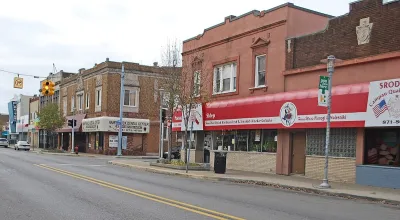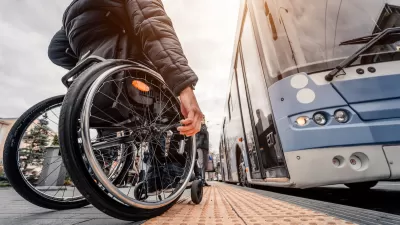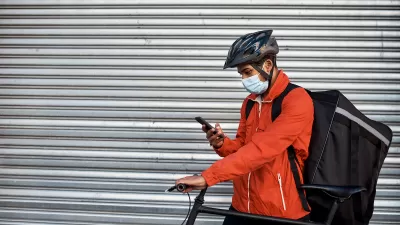A study reveals that the density of city blocks is a significant factor in communities’ walkability and, subsequently, improved public health outcomes for residents.

New research affirms the connection between walkable communities and improved health outcomes for residents, reports Emilio Perez Ibarguen in Great Lakes Echo.
Researchers from Michigan State University wanted to understand the more specific factors that impact public health to better inform policymakers. Of the four factors that typically define walkability — size of blocks, proximity to transit stops, variety of business types, and variety of zoning types — “The density of street intersections – corresponding closely to the size of blocks in the area – had the greatest impact on obesity.”
The study also found that factors unrelated to urban design, such as socioeconomic status and race, had more significant impacts on health than walkability.
The article includes information about Michigan cities that are working to improve their walkability and make their streets safer for pedestrians. The small Detroit enclave of Hamtramck, population 28,400, is the most walkable in the state. While its small size is an advantage, the town has also taken actions such as allowing mixed-use buildings. But a lack of transit connectivity to bigger cities and other regions can stifle the potential of small towns, where people remain dependent on cars for transportation outside the city.
FULL STORY: Walkable communities associated with better health, study shows

Manufactured Crisis: Losing the Nation’s Largest Source of Unsubsidized Affordable Housing
Manufactured housing communities have long been an affordable housing option for millions of people living in the U.S., but that affordability is disappearing rapidly. How did we get here?

Americans May Be Stuck — But Why?
Americans are moving a lot less than they once did, and that is a problem. While Yoni Applebaum, in his highly-publicized article Stuck, gets the reasons badly wrong, it's still important to ask: why are we moving so much less than before?

Research Shows More Roads = More Driving
A national study shows, once again, that increasing road supply induces additional vehicle travel, particularly over the long run.

Judge Halts Enforcement of Anti-Homeless Laws in Grants Pass
The Oregon city will be barred from enforcing two ordinances that prosecute unhoused residents until it increases capacity and accessibility at designated camping sites.

Advancing Sustainability in Los Angeles County Schools
The Los Angeles County Office of Education’s Green Schools Symposium brings together educators, students, and experts to advance sustainability in schools through innovative design, climate resilience strategies, and collaborative learning.

Using Old Oil and Gas Wells for Green Energy Storage
Penn State researchers have found that repurposing abandoned oil and gas wells for geothermal-assisted compressed-air energy storage can boost efficiency, reduce environmental risks, and support clean energy and job transitions.
Urban Design for Planners 1: Software Tools
This six-course series explores essential urban design concepts using open source software and equips planners with the tools they need to participate fully in the urban design process.
Planning for Universal Design
Learn the tools for implementing Universal Design in planning regulations.
City of Moreno Valley
Institute for Housing and Urban Development Studies (IHS)
City of Grandview
Harvard GSD Executive Education
NYU Wagner Graduate School of Public Service
City of Cambridge, Maryland
Newport County Development Council: Connect Greater Newport





























